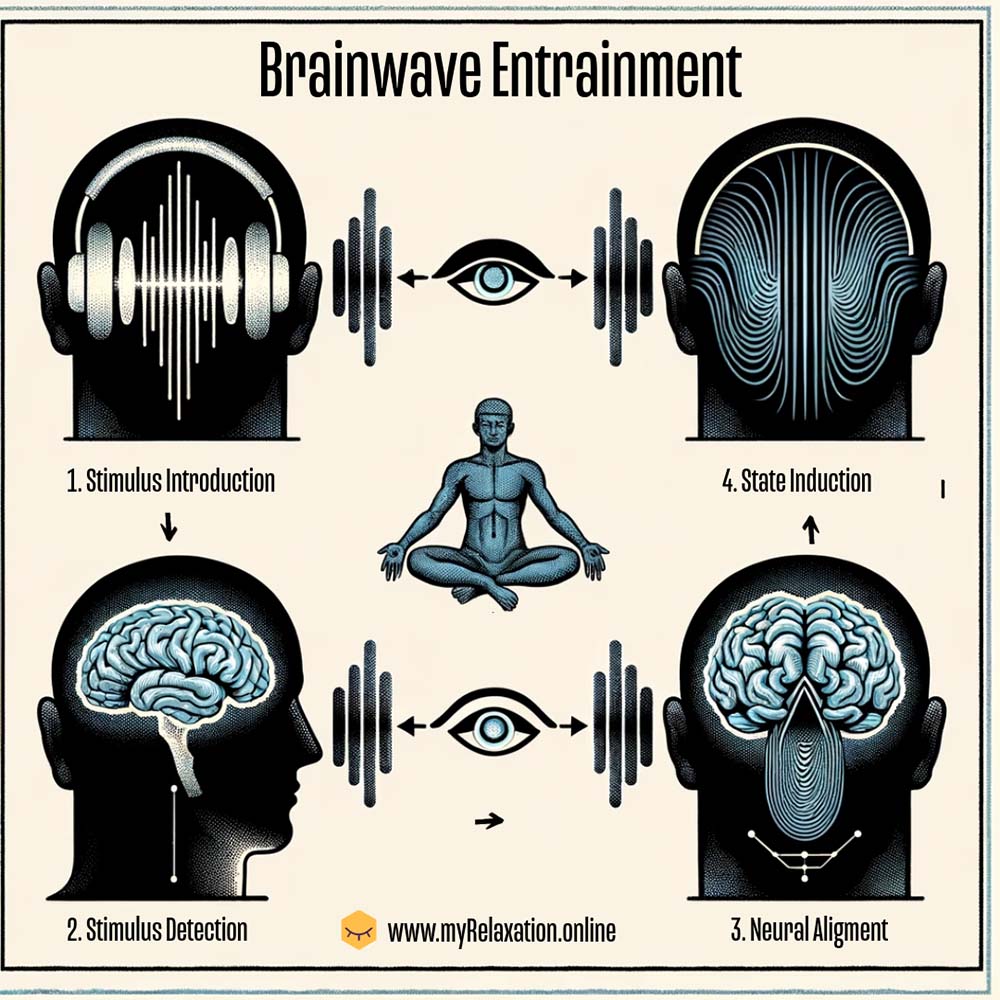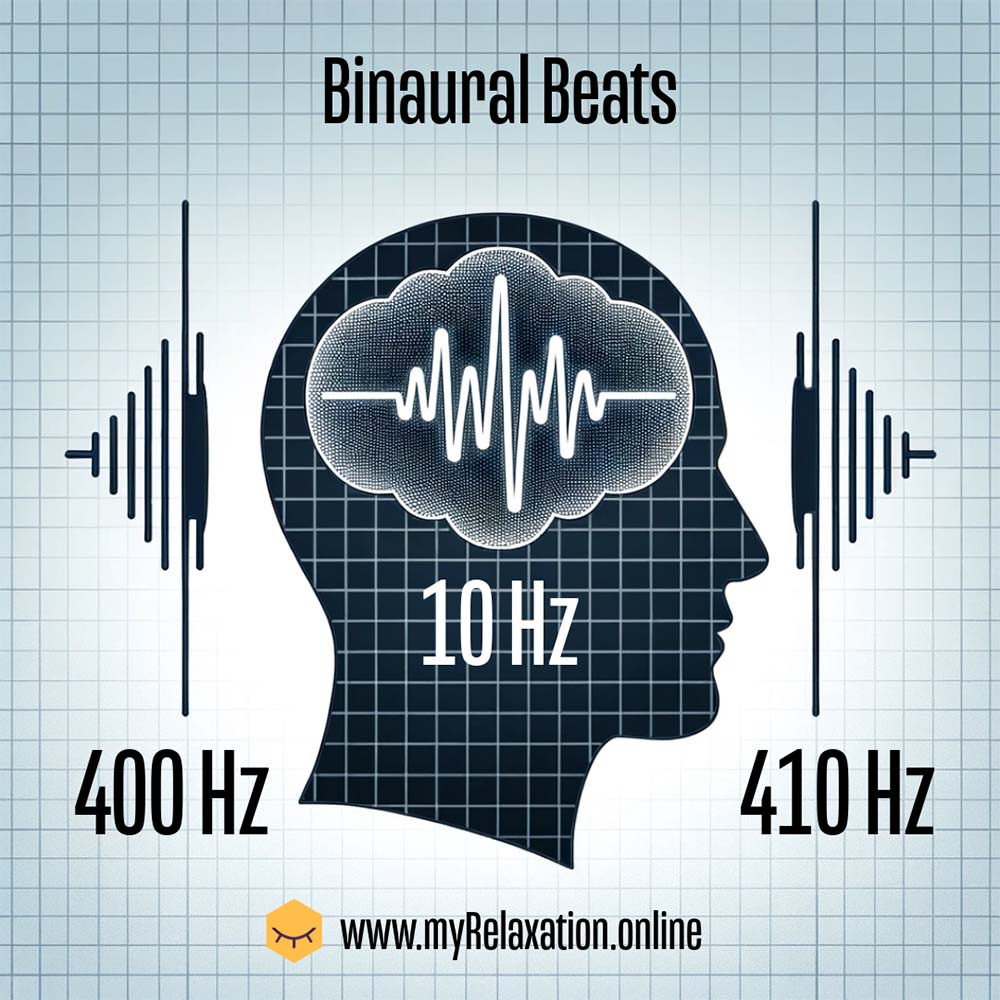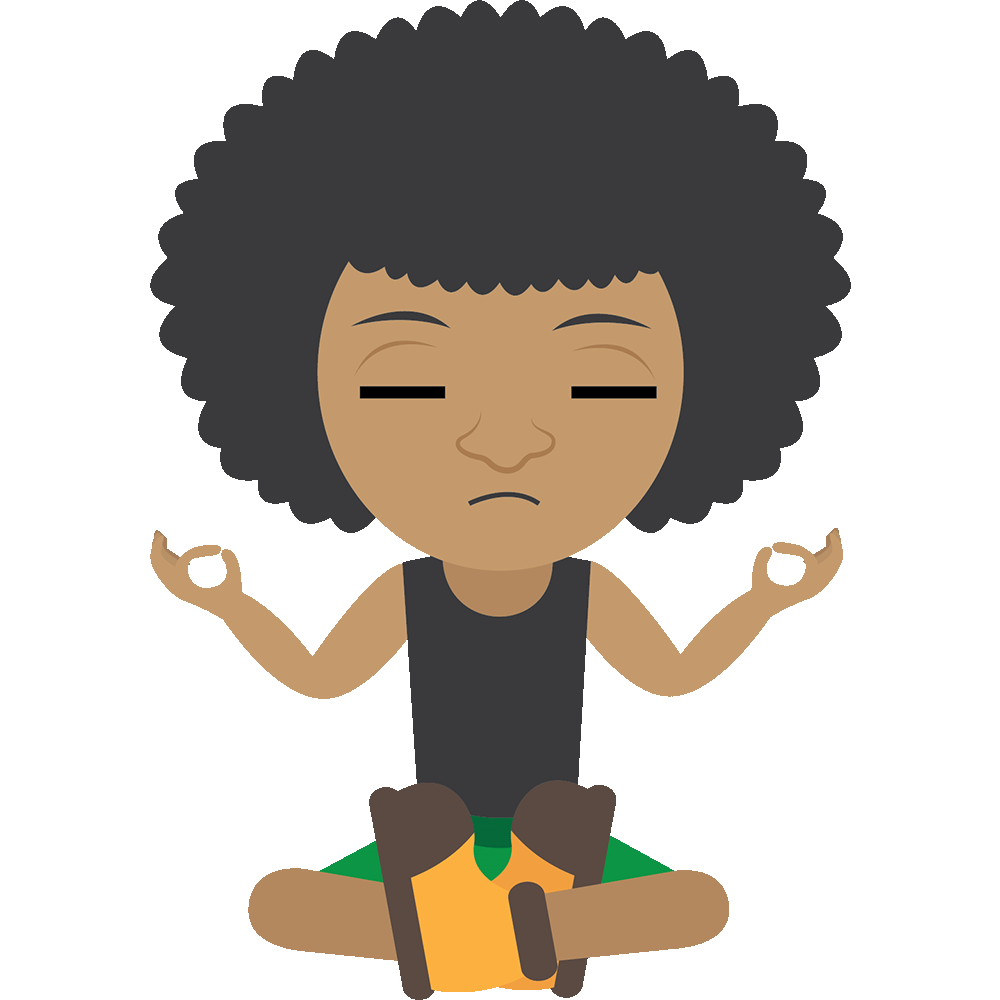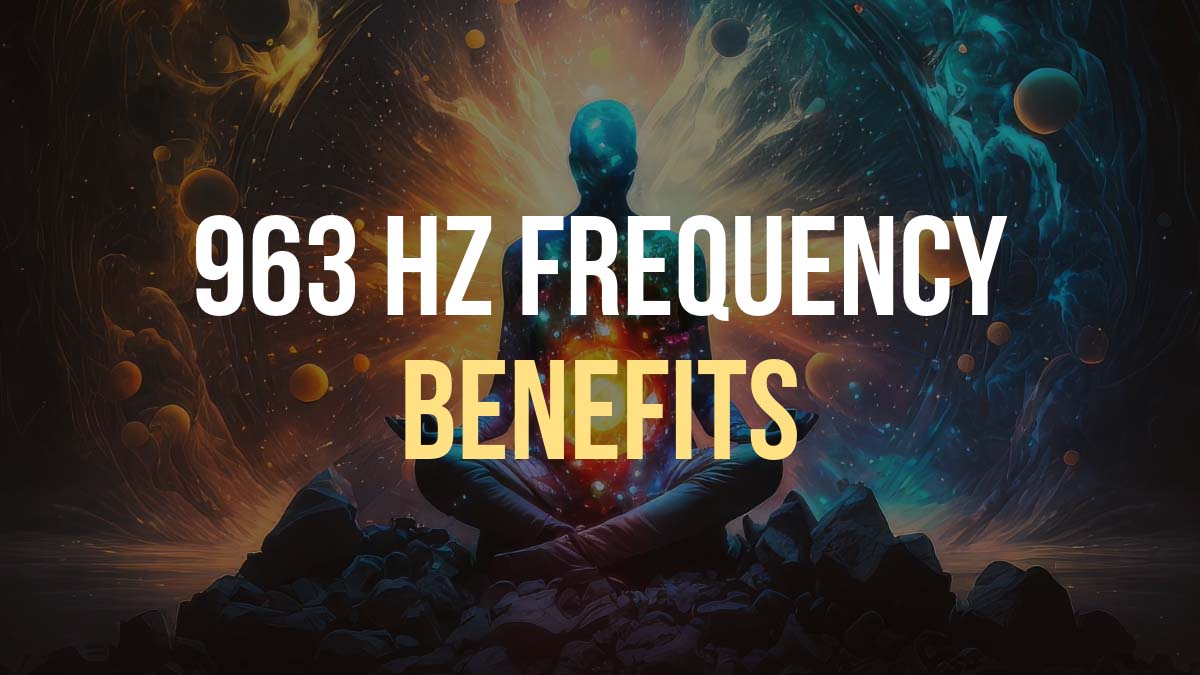Unlock Your Brain’s Potential With Brainwave Entrainment

Brainwave entrainment is a relatively new area of study that bridges the gap between technology and the human mind.
In a nutshell, by aligning brainwave frequencies with external stimuli, such as a sound frequency, this technique claims to influence mental states, offering benefits like improved sleep, enhanced focus, and deeper meditation.
In this post, we will explain the various types of brainwaves involved with this technique, their benefits, how brainwave frequency sounds are generate with binaural beats (with audio examples), and answer some of the most commonly asked questions.
Keep reading!
How brainwave entrainment works?
Brainwave entrainment is based on the principle that the brain can be directed to enter specific states of consciousness by matching the frequency of the brainwave pattern to that of the intended state.
Brainwave entrainment, also known as brainwave synchronization, is a method used to stimulate the brain into entering a specific state by exposing it to a periodic stimulus, such as sound frequencies.
The brain naturally tends to align its own electric cycles to the rhythm of these external stimuli, a phenomenon known as the ‘frequency following response’.
The diagram below show how brain entrainemnt works step by step:

There are four step to this process:
1. Stimulus Introduction
Introducing a specific frequency stimulus, like a sound frequency to the listener.
2. Perception and Detection
The listener’s sensory organs (ears) detect this stimulus.
3. Neural Oscillation Alignment
The brain synchronizes its brainwave frequencies with the stimulus.
4. State Induction
This synchronization leads to a change in the listener’s mental state, aligning with the frequency of the stimulus.
What are the different types of brainwave frequencies?
Below are the different types of brainwave frequencies, each associated with distinct states of consciousness and cognitive functions:
Delta Waves (0.5–4 Hz)
These are the slowest brainwaves, associated with deep, dreamless sleep and regenerative healing.
Delta waves are predominant in infants and young children.
Theta Waves (4–8 Hz)
Linked to creativity, intuition, daydreaming, and deep meditation, theta waves occur in light sleep and under conditions of deep relaxation.
Alpha Waves (8–12 Hz)
Present during calm, relaxed yet alert states, alpha waves are associated with stress reduction, positive thinking, and a bridge between the conscious and subconscious mind.
Beta Waves (12–30 Hz)
These are high-frequency, low-amplitude brainwaves that are dominant during waking states of consciousness, associated with active, busy, or anxious thinking and active concentration.
Gamma Waves (30+ Hz)
The fastest brainwaves, gamma waves are associated with heightened perception, problem-solving, and cognitive functioning.
They are linked to moments of insight and high-level information processing.
is it possible to hear brainwave frequencies?
Most of the brainwave frequencies are below the threshold of human hearing and cannot be heard directly by the naked ear.
In brainwave entrainment, these frequencies are not heard directly.
Instead, we use techniques like binaural beats where two slightly different frequencies are played in each ear.
The brain perceives the difference between these frequencies as a separate, pulsating tone that is within the audible range, allowing the brainwave frequencies to influence the brain indirectly.

For example, if a tone of 400 Hz is played in one ear and 410 Hz in the other, the brain will entrain to the difference (10 Hz), which is in the alpha range and can be perceived and utilized for entrainment purposes.
You can hear the resulting frequencies here:
What are the main benefits of using brainwave entrainment technique?
Brainwave entrainment offers several benefits, including:
1. Improved Sleep
It can help regulate sleep patterns and contribute to deeper, more restorative sleep.
Which frequencies to use?
Delta Waves (0.5–4 Hz) are ideal for promoting deep, restorative sleep.
2. Enhanced Relaxation
Assists in reducing stress and anxiety, promoting a state of calm and relaxation.
Which frequencies to use?
Theta Waves (4–8 Hz) are useful for relaxation and stress reduction.
Alpha Waves (8–12 Hz) are also beneficial for calm and relaxation.
3. Increased Focus and Concentration
Aids in improving attention span and concentration, particularly useful for tasks requiring sustained mental effort.
Which frequencies to use?
Beta Waves (12–30 Hz), especially higher beta frequencies are good for focus and concentration.
4. Better Cognitive Function
Can enhance memory, problem-solving skills, and overall cognitive performance.
Which frequencies to use?
Gamma Waves (30+ Hz) are commonly associated with heightened perception, memory, and problem-solving.
5. Deepened Meditation
Facilitates deeper, more effective meditation sessions by helping the brain reach meditative states more easily.
Which frequencies to use?
Theta Waves (4–8 Hz) can help in achieving deeper meditation states.
6. Mood Enhancement
May help improve mood and emotional stability by influencing brainwave patterns associated with positive mental states.
Which frequencies to use?
Alpha Waves (8–12 Hz) can improve mood and promote a positive mental state.
Beta Waves (12–18 Hz) may be helpful in generating more alertness and better mood in some individuals.
7. Creativity Boost
By accessing different brainwave states, it may foster creative thinking and inspiration.
Which frequencies to use?
Theta Waves (4–8 Hz) are recommended for creativity and insight, fostering a state conducive to creative thinking.
Are there more audio frequencies that can be used for relaxation or healing?
Audio frequencies like Solfeggio frequencies, 432 Hz tuning, and 528 Hz, as well as sound types like white noise, pink noise, and nature sounds, are believed to promote relaxation and healing.
See the complete list of healing frequencies.
Most frequently asked questions about brainwave entrainment
Finally, here are some of the most frequenctly asked questions we hear from our clients:
What are some potential side effects or risks associated with brainwave entrainment?
Brainwave entrainment can cause side effects like seizures in individuals with epilepsy, mood disturbances in those with psychiatric conditions, headaches, sleep disruptions, and overstimulation.
It’s crucial to use it cautiously, particularly for those with pre-existing health issues, and to consult with a healthcare provider before starting to minimize risks and potential dependencies.
How often should I use brainwave entrainment, and for how long?
The optimal frequency and duration of brainwave entrainment sessions can vary based on individual needs and goals. Generally, starting with shorter sessions of about 15-30 minutes, and gradually increasing to no more than 60 minutes per session, is recommended.
Most practitioners suggest using brainwave entrainment 3 to 4 times a week, but it can be used daily if it provides benefits and does not cause discomfort or adverse effects.
For therapeutic or specific goal-oriented uses, such as improving sleep or enhancing concentration, a more regular and tailored schedule might be necessary.
It’s important to listen to your body and mind’s responses to the sessions and adjust accordingly.
If you notice any negative effects, reduce the frequency or duration of your sessions.
If you’re not sure consult with a healthcare professional familiar with brainwave entrainment.
How does brainwave entrainment compare to other mindfulness and relaxation techniques?
Brainwave entrainment is a more technology-driven approach to achieving altered states of consciousness compared to traditional mindfulness and relaxation techniques like meditation, yoga, and deep breathing exercises.
It directly influences brainwave patterns through external stimuli, offering a potentially quicker and more predictable path to achieving specific mental states like relaxation, focus, or sleep.
In contrast, mindfulness and relaxation techniques typically require more practice and personal effort to master and may take longer to achieve the desired mental state.
However, these traditional methods also offer benefits that brainwave entrainment might not, such as improving self-awareness, emotional regulation, and stress resilience without dependency on technology.
More questions?
Ask below or tell us about your experience with brainwave entrainment and binaural beats! Post a comment









